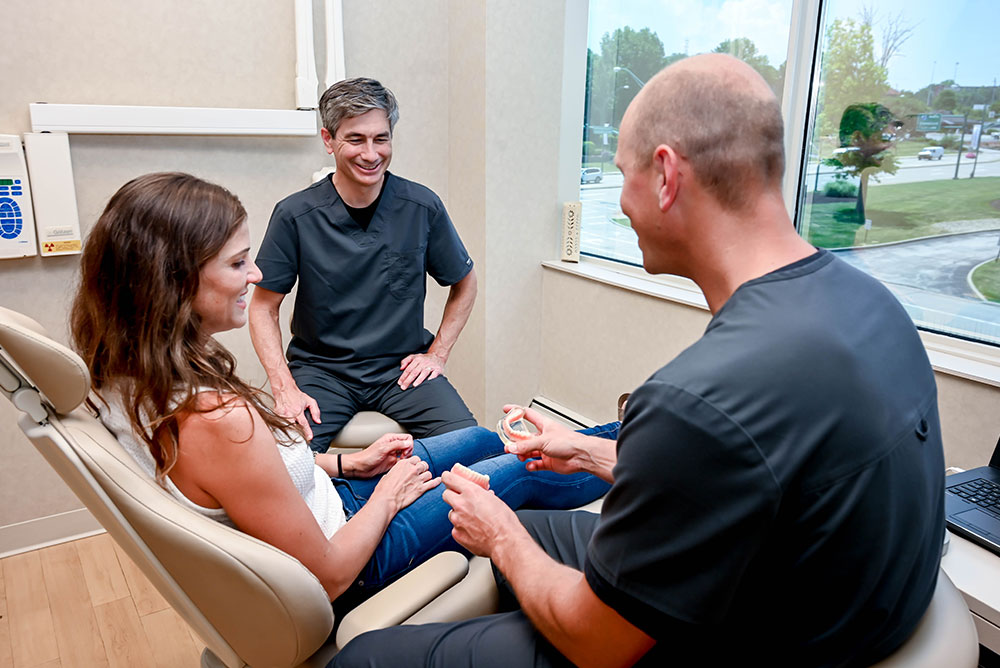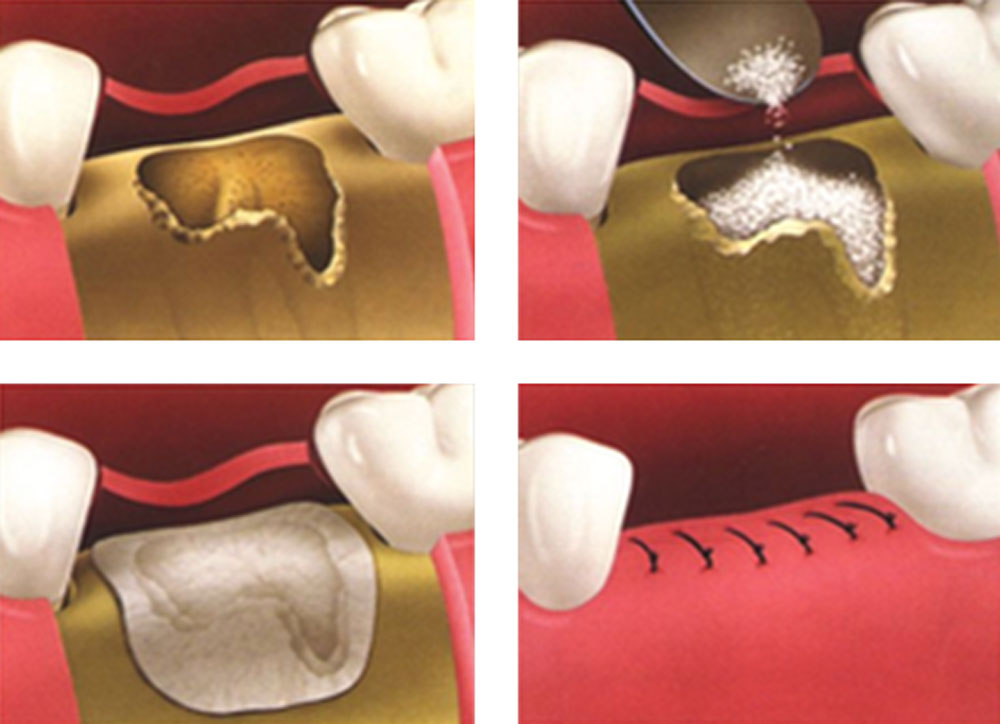Did you know bone constantly remodels itself?
The jawbone does this by depositing new bone cells and removing old ones. This fact can be both helpful or harmful to the bone that supports your teeth.

The What and Why of Bone Grafting
When teeth are lost, the bone that used to surround them starts to “resorb,” or melt away. Bone loss may also be caused by periodontal (gum) disease. To help build up the bone that has been lost, we at Morgan & Lemke Periodontics & Dental Implants offer state-of-the-art bone-grafting techniques.
Bone grafting is a minor surgical procedure that allows us to repair, or rebuild, bones through the transplantation of bone tissue. The transplantation of healthy bone tissue allows us to recreate bone and supporting tissues that are missing.
As an outpatient procedure, patients are typically sedated throughout the bone grafting process and experience minimal pain while the graft heals. Overall, a bone graft is the best first step most people will take before they receive their beautiful new replacement tooth.

A bone graft can be necessary to:
- Fill the void created by tooth extraction, trauma, congenital missing teeth or periodontal disease.
- Proactively plan to replace a missing tooth with a dental implant by strengthening the area to better hold and support the implant; most importantly, the graft ensures enough quality bone be present to place exactly the proper size, shape and type of implant required for each patient’s needs.
- Restore or preserve esthetic appearance and functionality of the dental ridge and for future tooth replacement treatment.
The type of bone graft we use depends on the extent of the damage you’re suffering from, in addition to the location of the lost tooth.
Types of bone graft we offer include:
- Autogenous – Also known as autografts, autogenous bone grafts are made from your own bone, taken from somewhere else in the body. Typically, the bone is harvested from the chin or jaw. The advantage of autogenous bone grafts is the graft material is live bone, containing living cellular elements that enhance bone growth; a downside is that this approach requires two surgical sites to complete.
- Allograft – Often called allogenic bone, allograft is bone harvested from a cadaver and processed with a special procedure to help prepare for a graft. Unlike autogenous bone, allogenic bone cannot produce new bone on its own. By serving as a framework, however, bone from the surrounding walls can grow to fill the defect or void.
- Xenograft – Xenogenic bone, used for xenografts, is derived from non-living bone of another species, usually a cow. After processed at very high temperatures, xenogenic bone avoids the potential for immune rejection and contamination. Like the allograft procedure, xenongenic grafts serve as a framework for bone from the surrounding area to grow and fill the void. Both the allograft and xenograft approach require only one procedure.
Are Bone Grafts Painful?
No! We complete bone grafts in our office every day and patients experience little or no pain as the graft heals. While the graft heals, you should feel little to no discomfort.
Depending on your individual healing process, the bone graft will become new, strong bone usually within three to six months. A simple dental X-ray will show your progress to reveal the level of bone growth and guide you to the next step of getting your dental implants.
